AN-SOF Tactical Delta Loop, GND
This is an AN-SOF antenna model for a Chameleon Antenna ground mounted delta loop antenna using the CHA 5:1 Hybrid Mini, Two CHA SS-17 telescoping 17' whips, ground mounted spike, TDL Hub, 25' top wire, and 50' of RG-58C coaxial feed line. This model assumes no counterpoise/radials and average North American ground properties.
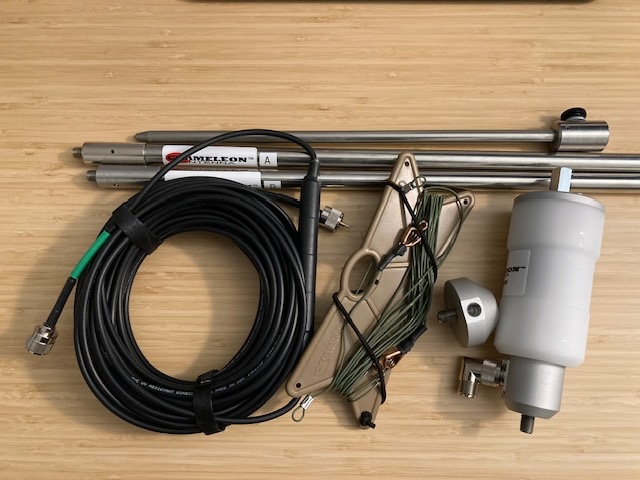
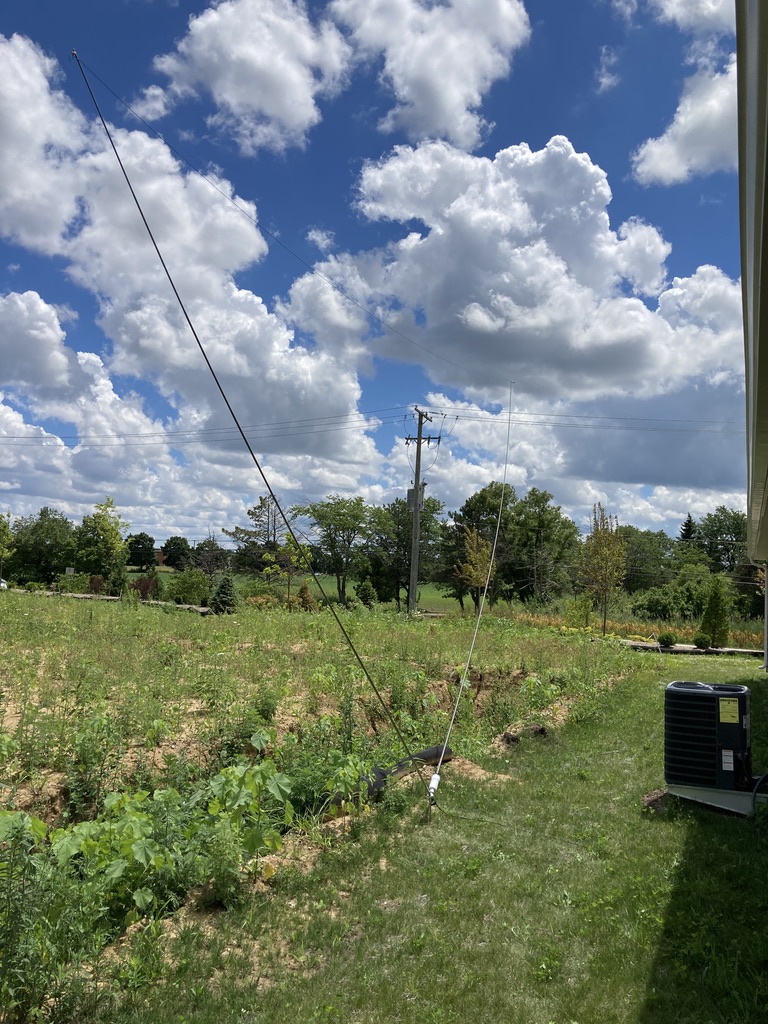
This analysis does not call out many of the analysis/setup steps and instead focuses on the key analysis results needed to understand the top-level performance of the antenna. See the 10m vertical in free space post for an analysis walk through with all the detailed steps called out.
First step was to create a drawing defining the element (telescoping whips and top wire) beginning and end points for use in the AN-SOF analysis tool. The feedpoint (not shown in the drawing below) is at the base of one of the SS-17 whips.
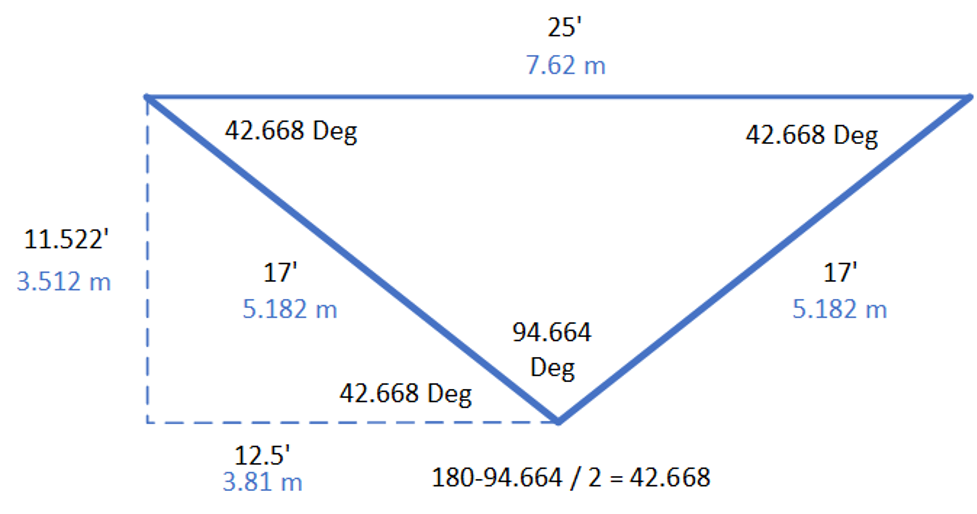
With these end points defined, the model can be entered into AN-SOF.
Mount Point X, Y, Z
0, 0, 0
Upper Left Point X, Y, Z
-3.81, 0, 3.512
Upper Right Point X, Y, Z
3.81, 0, 3.512
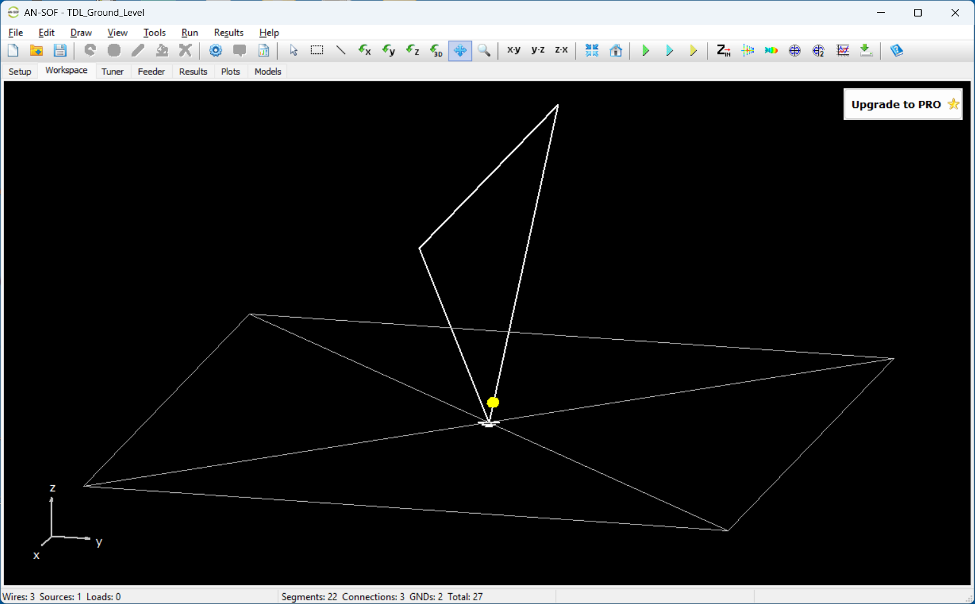
The yellow dot in the drawing above is the source (feed point) for the loop.
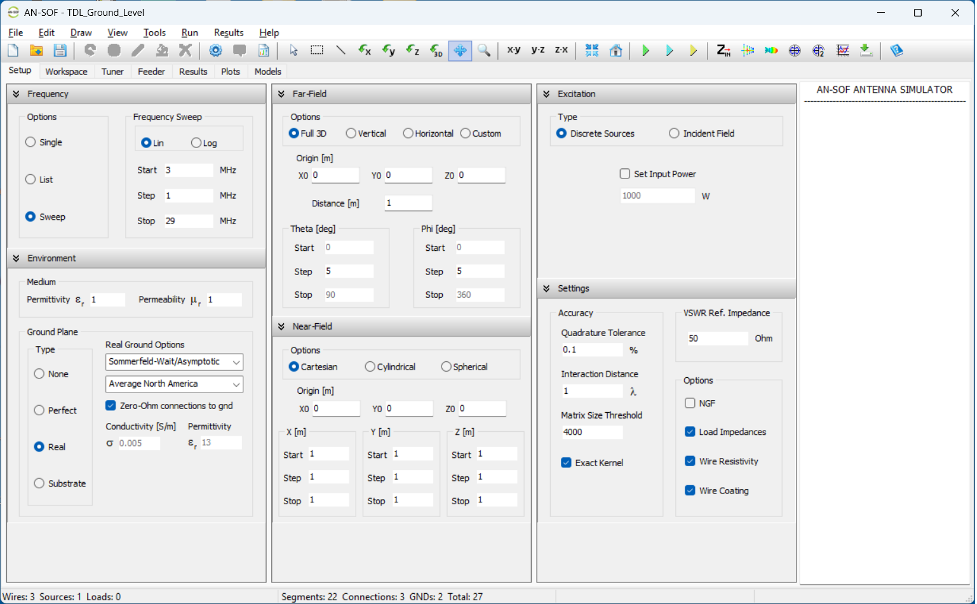
This analysis included 50' of RG-58C and the 5:1 Hybrid Mini (TRAFO) in the feed.
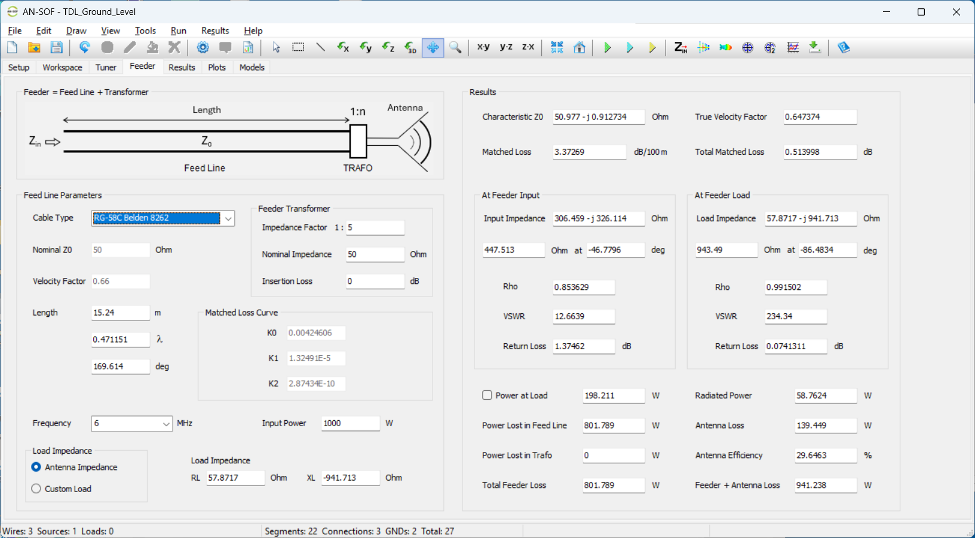
Run the analysis and view the (lower level) Results tab to see how VSWR changes over frequency.
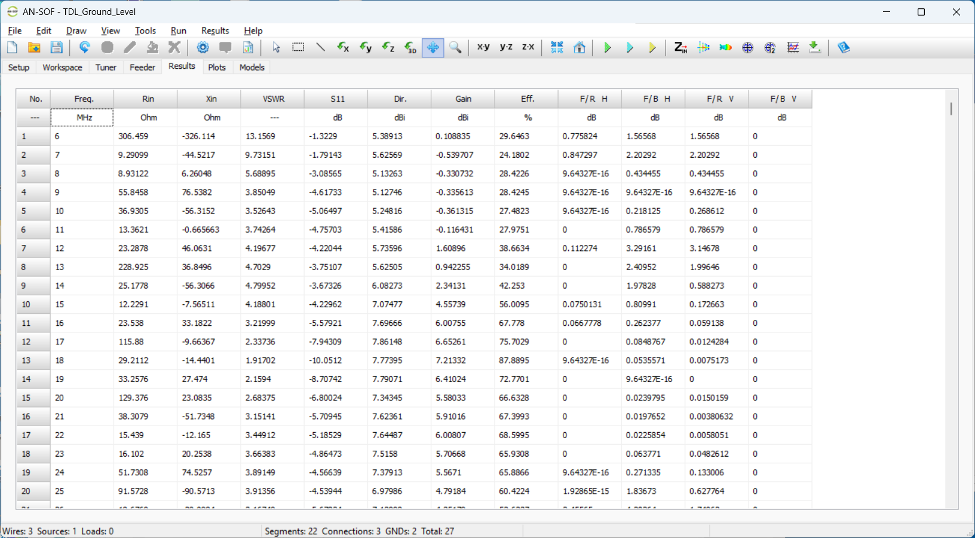
Inspection of the VSWR shows benefit of using a tuner with this antenna system.
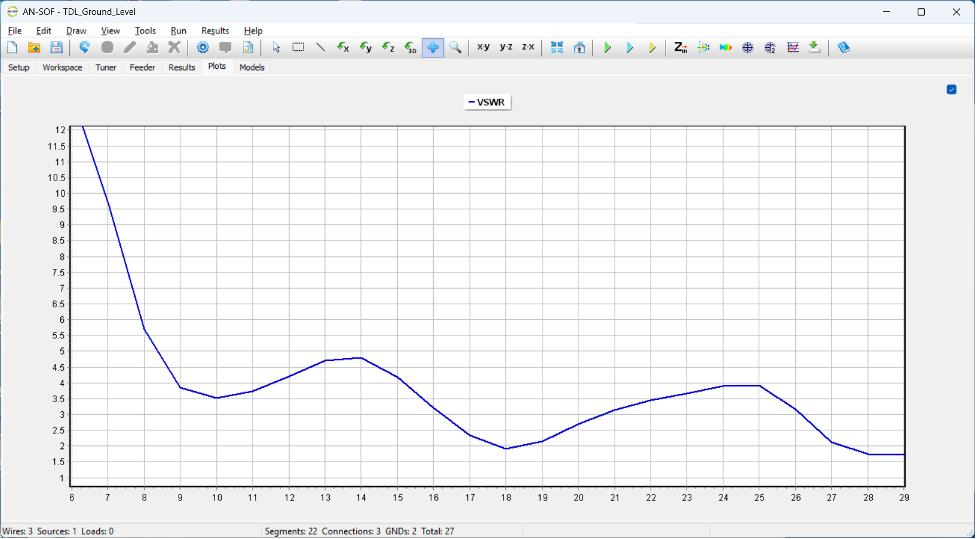
Here are a few far-field patterns showing significant (and interesting) pattern changes as the frequency is increased from 7 to 28 MHz.

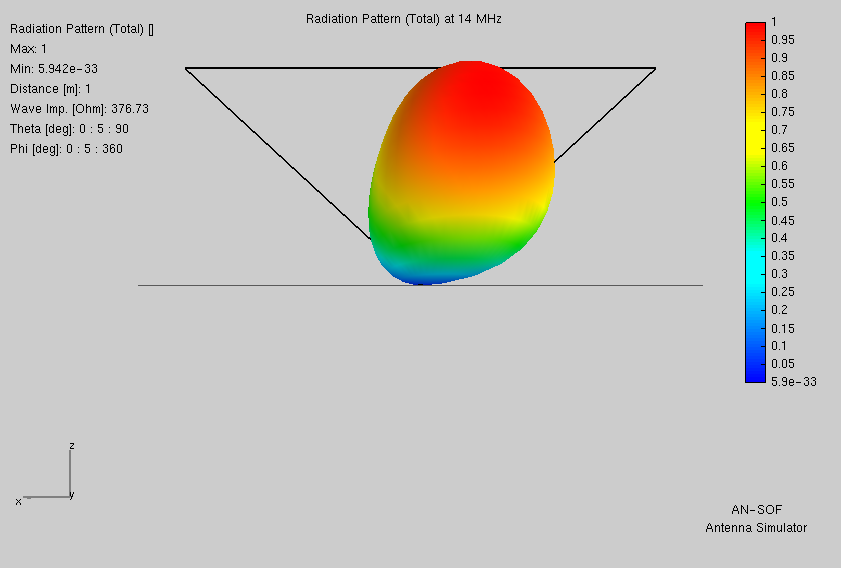
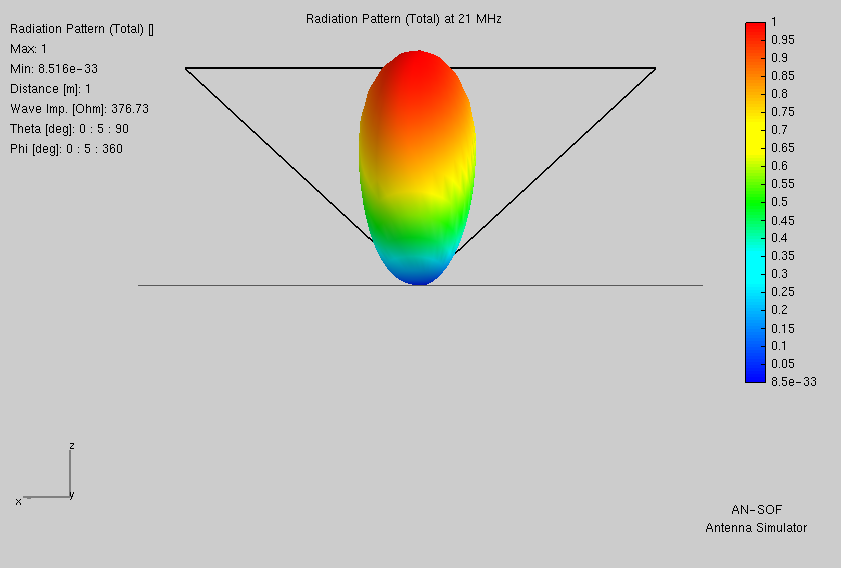
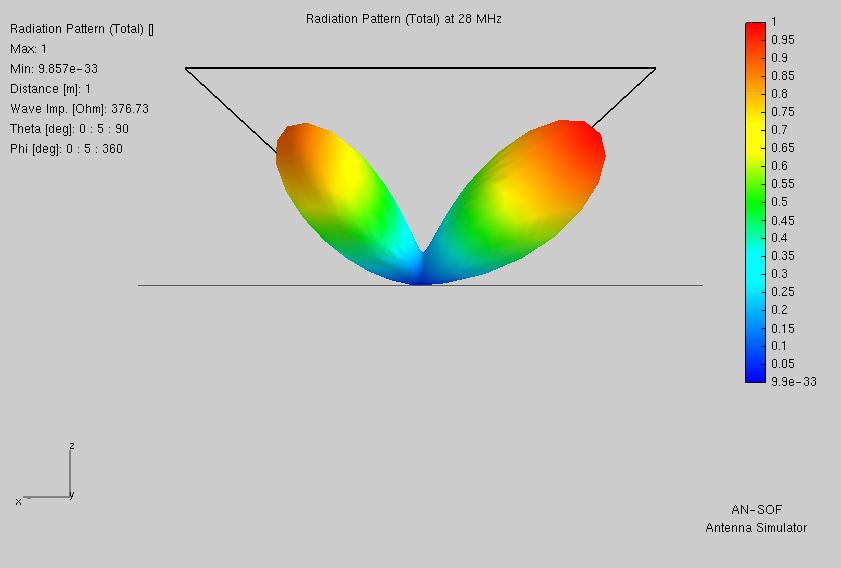
Here is another angle view for the far-field at 28 MHz, showing the bi-modal pattern on 10 meters. Takeaway: On higher bands, point the top wire in the direction you want to talk (or sides to stations/noise you don't want to hear as much).

The patterns changed so quickly that an animation seemed to be the best way to capture and display them.
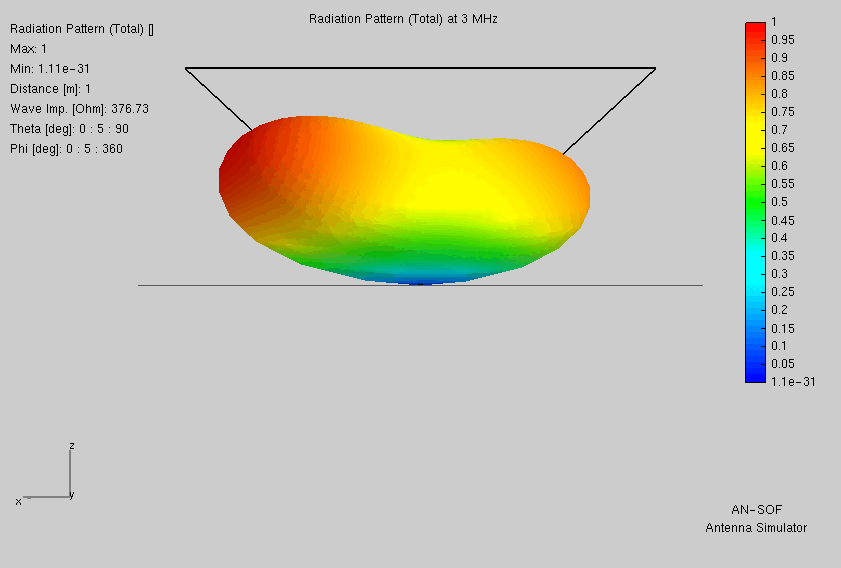
Chameleon Antenna promotes that this antenna is largely omni-directional at lower frequencies and has more of a bi-directional pattern at higher frequencies. This far-field analysis appears to confirm that statement.
It's interesting to note that even with these far-field pattern variations, this antenna performs amazingly well when ground mounted. Searching the internet for CHA Tactical Delta Loop Antenna will yield examples of many POTA operators that use this antenna regularly (if not as their main antenna).
Conclusions: This is a reasonable antenna to use when quick setup, broad frequency range, and somewhat omini-directional coverage is needed. The antenna is easy to deploy and does not have a lot of visual presence (two 17' telescoping whips and the top wire). No vertical supports or trees are needed for this ground mounted delta loop system. An antenna tuner is needed on most bands, with an automatic tuner providing quick frequency changes between bands.
Want to try simulating your antenna designs? Try AN-SOF from https://antennasimulator.com/ and begin your learning journey into the fascinating world of antenna analysis and design.
Here is the main page for my AN-SOF antenna simulations.